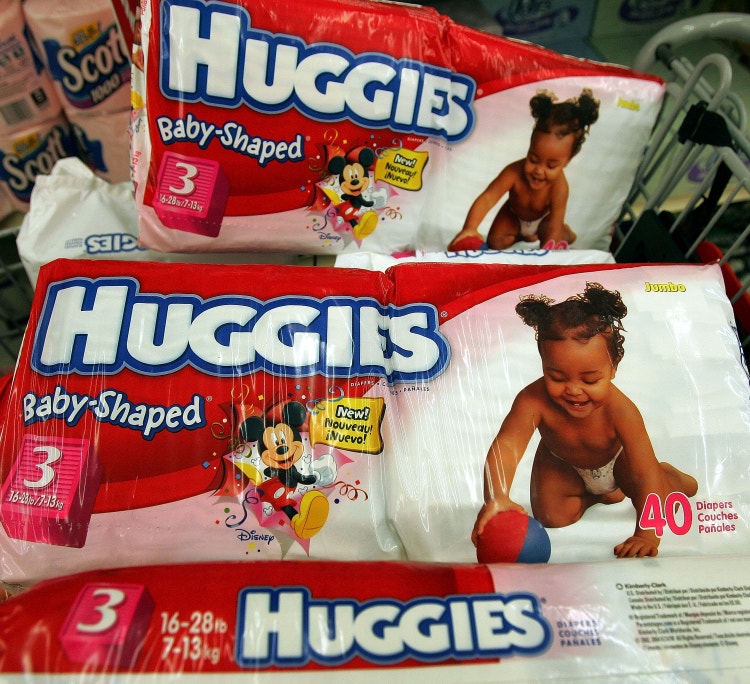Tim Boyle
Great stocks don’t always stay great forever. Times change and so do consumer preferences as well. Few concepts last forever, and great stocks aren’t always able to maintain their dominance over the long term.
Kimberly-Clark Corporation (NYSE:KMB) has been one of the best-performing stocks in the market over the last several decades, but the stock has disappointed for much of the last 10 years.
Kimberly-Clark has struggled to grow earnings on any sustainable basis for several years now, and the company’s recent disappointing earnings report once again highlights the three main issues this company continues to struggle with. The company continues to struggle with rising costs, slowing organic growth rates in the company’s largest and most mature markets, and forex headwinds.
Kimberly-Clark recently reported second-quarter results of $5.1 billion in sales and sales growth of 7%. The company saw a year-over-year decline in sales of 2% because of currency moves. Organic sales rose 9% as the company raised prices by 9%, but product volumes declined. The company’s overall profits for the second quarter were $621 million, a decline from the adjusted profits of $676 million last year. The company did show some positives, such as price increases offsetting rising costs. Though earnings and growth flatlined, the company was able to raise prices without losing significant market share, and the earnings have not fallen significantly even though margin compression has occurred. Kimberly-Clark’s earnings have stabilized, and even though the company isn’t growing earnings in the current environment, earnings remain sufficient enough to pay current dividends and the company’s business model remains recession resistant.
Still, the reality is that Kimberly-Clark’s net margins of 8.9% are now at the lowest point the company has seen in over a decade, and management’s price increases are not offsetting rising costs. The company’s declining volumes show even Kimberly-Clark’s premium brands are losing market share, in part because of the price increases the company was forced to put in over the last year. The dollar has also moved up dramatically against the euro and most other major currencies over the last month. Forex moves had a significant and negative impact on Kimberly-Clark’s second-quarter earnings, with forex moves causing sales to decline by 2% just in the last quarter.
This consumer giant was only able to grow revenues at 4.7% per year between 2016 and 2020, when inflation and rising costs were not significant problems. The company’s revenues reached a short-term peak of $19.1 billion in 2020. Rising costs and forex moves have now reduced the company’s revenue growth significantly, and the company simply doesn’t have the pricing power to drive revenue growth in the current inflationary environment.
Kimberly-Clark also trades at nearly 24x forward earnings estimates despite the company’s anemic earnings growth over the last 6 years, and the rising costs and forex issues this company is facing aren’t going away anytime soon. Kimberly-Clark gets nearly half the company’s revenues from outside of the U.S. Even though this company boasts many strong brands such as Kleenex and Huggies, volumes are falling, and revenue growth continues to be slow to nonexistent. Kimberly-Clark does have a recession-resistant business model that justifies a premium multiple to the company’s growth level, but 24x forward earnings is too high a multiple for a company that hasn’t been able to consistently drive growth over 5% in 6 years.
Even though the current inflationary environment has created challenges for many companies, consumer giants such as Procter and Gamble (PG) and Coke (KO) have had far more success than Kimberly-Clark in the same operating environment. Pricing power has been key with input costs rising, and Coke and Procter & Gamble have consistently been able to raise prices significantly. Kimberly-Clark has not had the same pricing power as other consumer competitors, and that’s the main reason the company hasn’t been able to drive any consistent growth over the last 2 years. Kimberly-Clark has both underperformed the consumer retail sector as well as the overall market for the last 6 years.
Kimberly-Clark was one of the best-performing stocks in the market for over a decade. With costs remaining high and forex moves likely to continue to hurt the company’s bottom line, this stock’s best days are likely behind the company. Even though this company does have a recession-resistant business model, stable earnings, and premium brands, the earnings growth has been unimpressive for some time.
Kimberly-Clark’s brands and solid earnings should prevent the share price from selling off significantly from current levels. Kimberly-Clark was already seeing slowing growth long before costs began to rise significantly in early 2021, and management simply doesn’t seem to have a viable plan to offset margin compression or drive substantive growth at this time.


Be the first to comment